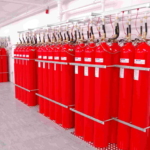Offset thermography, often known as raised ink printing, is a low-cost alternative to traditional engraving and embossing that produces a three-dimensional impression. Thermography is widely considered a superior printing method that dramatically improves the quality of any printed product.
Thermography printing dates back to the early 1900s, which is surprising. As you read, you will get more acquainted with the nuances of this concept, making you a more qualified authority on the subject. If this has piqued your interest in purchasing thermography products, companies like TEAM Concept Printing can help.
Letterheads and business cards have been created using thermography services by businesses of all sizes. Anything you desire from them will undoubtedly stand out from the crowd.
An Introduction to Thermographic Printing’s History
Have you ever come across infrared printing? Thermography printing refers to two methods of printing that use heat to create images or text on paper. The most basic thermographic printing technique uses paper coated with a substance that changes color when heated. Thermal printing is commonly seen in old fax machines and cash register printers. The thermal transfer process may also be used to print. However, it is more complicated. Some ribbon inks may be melted into paper.
When thermographic printing was established, just a few documents were saved. As a result, much of its early history has to be clarified. Thermal printing, on the other hand, dates back to the early 1900s.
Thermography was a technique for introducing one-of-a-kind effects into the printing process. Before the advent of thermography printing, it was normal to dust powdered copal resin on wet ink, elevate the substrate to a vertical position, and shake off the excess powder.
Copal varnish resins are made from the sap of several tropical plants. When polished, the copal’s many colors, ranging from translucent to bright yellowish brown, are revealed. Because it dissolves in hot alcohol and organic solvents, it is used to make printing ink and varnish. The object would be put on a heat source, such as a specialized hot plate, to get the desired raised printing appearance.
Before the first automated thermography device was constructed in 1915, thermography required a significant amount of experience. Legend has it that the Virkotype Company invented the first self-operating thermograph. In 1920, Carlson Company began distributing Virkotype hardware and software in Europe. Thermographic printing swiftly superseded copper or steel engraving as the major method of embossing ink due to its lower cost and broader availability.
Thermography became highly popular after WWII. More printers embraced the process as powders and equipment improved. Since 1900, thermographic printing has grown significantly, becoming a widespread printing technique capable of embellishing any piece of stationery.
What Is the Thermography Procedure?
Thermography is a post-printing method that combines thermography equipment with traditional printing techniques.
Offset printing ink is mixed with powdered resin and baked, causing the resin to rise up and give the ink a raised, textured look. To begin, an offset printer uses slow-drying ink to make the final product. A resin-dusting tunnel applies resin to the inked places and eliminates any surplus before transmitting the wet printed sheets. The resin is then heated until it melts, resulting in a bigger, glassy, elevated image.
Powders of many sorts are used in thermography. Powder types include fine, medium, coarse, dull, matte, and glossy. Because of their transparency, the granules absorb the color of the ink underneath them. Transparent ink can be used to create see-through drawings.
When Should Thermography Printing Be Used?
The great majority of thermographic printing clients utilize the service to manufacture business cards and other office stationery. Wedding invitations, greeting cards, report covers, and other printed promotional products are further examples. To generate distinct visual effects, thermography should be applied only in specified areas of the sheet.
It also has the ability to print Braille text. It is commonly used to print diplomas instead of the more expensive and time-consuming engraved embossing process.
Colors for Thermographic Printing
The transparent powder is frequently used to allow the raised zone to take on the color of the printed ink. Powders are available in a wide range of hues, including white, gold, silver, copper, and even glow-in-the-dark powders. As a result, you may be certain that thermography will match your aesthetic requirements.
Thermography Printing Has Several Advantages
Raised printing produces a professional, eye-catching print. Furthermore, thermography is significantly less expensive than engraving or embossing. It gives the printed material a haptic dimension. The ink on the printed product is totally dry after passing through the heat tunnel, allowing for quick cutting and packaging.
How to Create a High-Quality Thermographic Print
When creating a thermography printing project, keep the following points in mind. It would be better if you discussed your alternatives with the specialists at TEAM Concept Printing in order to get the finest potential outcomes for your project.
- Screens and halftones are not suggested for Thermography because they may cover the non-image zone. Similarly, avoid both complex and tiny components. Maintain a score of seven or less.
- The sizes of thermographic images are not limited. Large color patches, on the other hand, may cause blistering.
- Thermography can be done on coated or uncoated paper. In juxtaposition to the glossy thermography surface, the uncoated sheets stand out visually.
- Coverings with basic weights ranging from 20 pounds to three times that thickness are permitted. Avoid using textured materials if you want your prints to look their best.
Summary
Thermography is a distinct printing technology that yields some of the best results of any commercial printer. While you may be aware of certain parts, understanding what thermography can do for you will help you decide whether or not to have it printed.
The success of your advertising and brand-building operations may be influenced by the quality of your printed products. When looking for someone to help you with printing, look into the company’s reputation to verify that they can properly transform your ideas into textual form. TEAM Concept Printing tries to meet the demands of its clients by offering a variety of options, including thermography. Click here to find out more about the work they complete.








